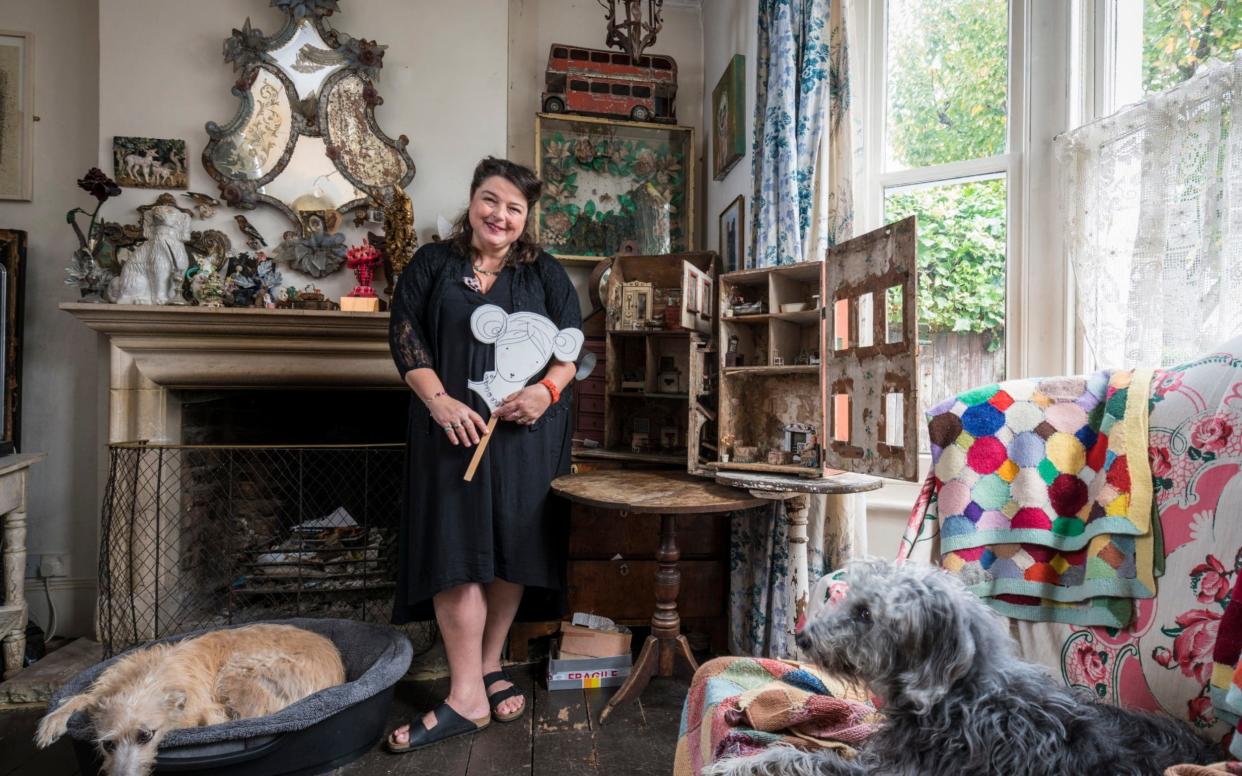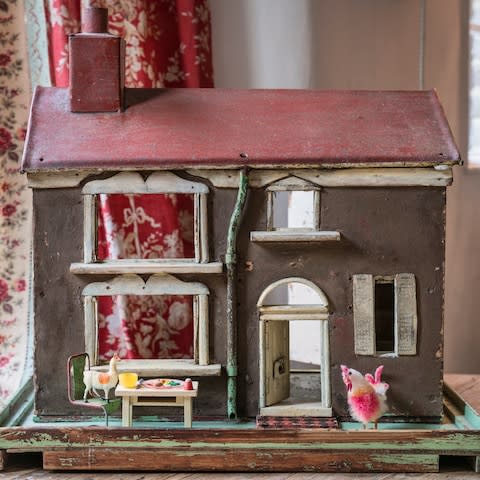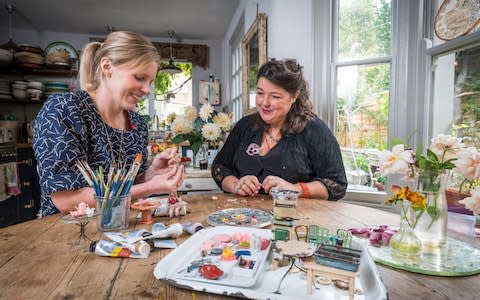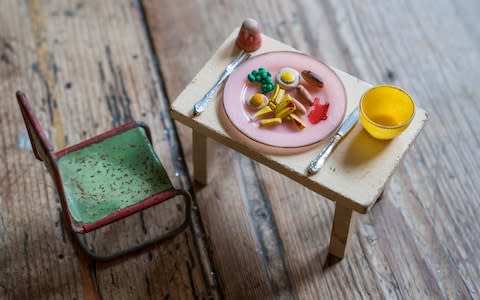Creating tiny toys: Make yourself at home in a miniature world

If you have ever put a little toy creature to bed in a matchbox, or clinked a cup of “tea” using the empty shell of an acorn, you have had a glimpse into Sam McKechnie’s miniature world. If you find worth in a discarded scrap of foil, or a faded but beautiful corner of wallpaper, you might even share the artist’s world, in which, she says, “there are infinite possibilities and almost anything can be made into something else”.
The sculptor, painter, doll-maker and jewellery crafter has “always loved old”, and her London home is full of flea-market finds – vintage labels from French perfume bottles, their paper backs yellowed with age yet still in prime condition for decoupage projects; worn tapestries; mercury-glass mirrors; and dolls’ houses large and small, with which McKechnie has been fascinated since she was a child.
The first miniature homes were not intended to be playthings for young hands or imaginations: Europe’s 16th-century “baby houses”, built as cabinet display cases with intricately furnished rooms, were handcrafted and sported idealised decor and fittings. Wealthy matrons owned them as trophy collections, with one Dutch creation of the late 1600s boasting bucolic murals and mantelpieces groaning with fingernail-sized chinaware.

Household management was taught to serving girls and maids with these ornate illustrations of domestic life above and below stairs. The V&A Museum of Childhood’s 100-strong collection of houses tracks the development of cabinet displays from luxurious and castellated piles hidden behind hinged panels to the mass-produced versions of the Thirties and beyond, then aimed at children and populated with Pit-a-Pat kitchen dressers and, later, furry Sylvanian figurines.
McKechnie’s bear exquisite details such as a wiggly drainpipe and hinged letterbox, but her new book, Miss Violet’s Doll’s House, sets out to inspire miniature scenes built in less-structured environments. A shelf, shoebox, or even a shoe itself can become the setting for a bedroom or kitchen, she tells me – this is The Borrowers made real. Mary Norton’s 4in world under the floorboards and Beatrix Potter’s enterprising animal protagonists are just some of the small-scale creations that first excited McKechnie; Rumer Godden’s books, too, which tell tales of dolls and their magical houses.

“I have always liked a contrast in scale,” McKechnie tells me, “in giant furniture, or a huge apple on a tiny table. It’s fantastical, like a fairy tale, and also a form of escapism.” The contents of a miniature home can be bought – such as plastic or celluloid cutlery and cups that can be plundered from car-boot sales, eBay, or from toy shops – or, even better, made. McKechnie shows me how to roll out small pieces of Fimo modelling clay and mould them into a feast – clusters of small balls for peas or beans, oblongs for chips and sausages, and discs for cherry tarts. Once baked hard, the shapes are coloured with water-based acrylic paints and secured to a plate with glue, complete with a smear of red paint to represent ketchup.
When all your focus is on creating something so small, it really makes you slow down
“Peppercorns can be glued together to make a bunch of grapes and star anise could make a wall hanging,” she says, while dinner plates can be made from upturned bottle caps.
The book includes projects that transform wooden bobbins and a circle of stiff cardboard into a table, and scraps of tin foil into mirrors for the wall. Snippets of wrapping paper and pressed flowers can become framed artwork, and I’ve a hankering to thread some old clear beads on to aluminium wire to make a chandelier.
“Most of us have a button, a single earring or a broken necklace, something that is quite lovely but that we don’t know what to do with.” For McKechnie, that’s the basis for a dinky ornament or drawer. “When all your focus is on creating something so small, it makes you slow down. Making anything – an artwork or plate of tiny food – it totally grounds me.”

The residents of her domestic scenes are an eccentric menagerie of small creatures and English-made Grecon dolls whose wire frameworks are wrapped with thread beneath stitched clothing. There’s Miss Violet, as well, a 2D paper doll and McKechnie’s muse, whose wardrobe can be clipped from the back of the book in the manner of 19th and 20th-century magazine costume cut-outs. The character came about when McKechnie travelled to Japan to teach doll-making workshops.
“I thought, what the hell would I say to all these women,” she says. To counter the language barrier she sketched them instead. Her scrapbooks are full of the outlined faces (her own alter-ego became Miss Vi), as well as paper cuttings and fabric swatches. All have value in a miniature world and McKechnie encourages her crafters to collect whatever catches their eye (paper flowers stuck on to a cocktail umbrella make a particularly spectacular brolly for Miss Vi). She hosts workshops at Designers Guild and, on rare occasions, at home, where she likes to work at the paint-flecked kitchen table.
MINIATURE MAKES
The dolls made in these sessions have papier mâché limbs, clay heads and linen bodies filled with lavender. Those who make them sew in their own fabric scraps and charms, each figure unique to its creator.
“That’s the joy of a doll’s house and everything in it,” says Sam. “You can do anything; just keep your eyes open for inspiration.”
Miss Violet’s Doll’s House by Sam McKechnie (Pavilion, £20) is out now and available from books.telegraph.co.uk

